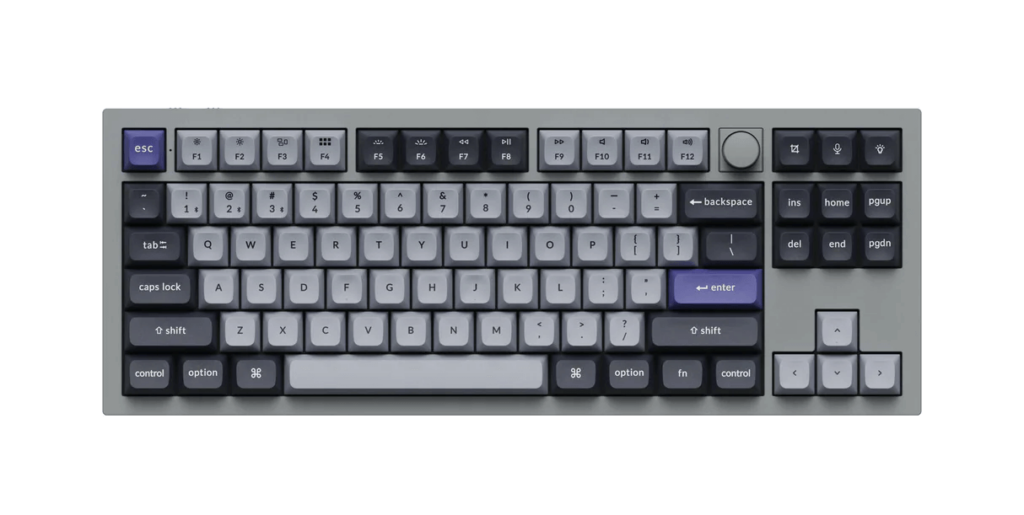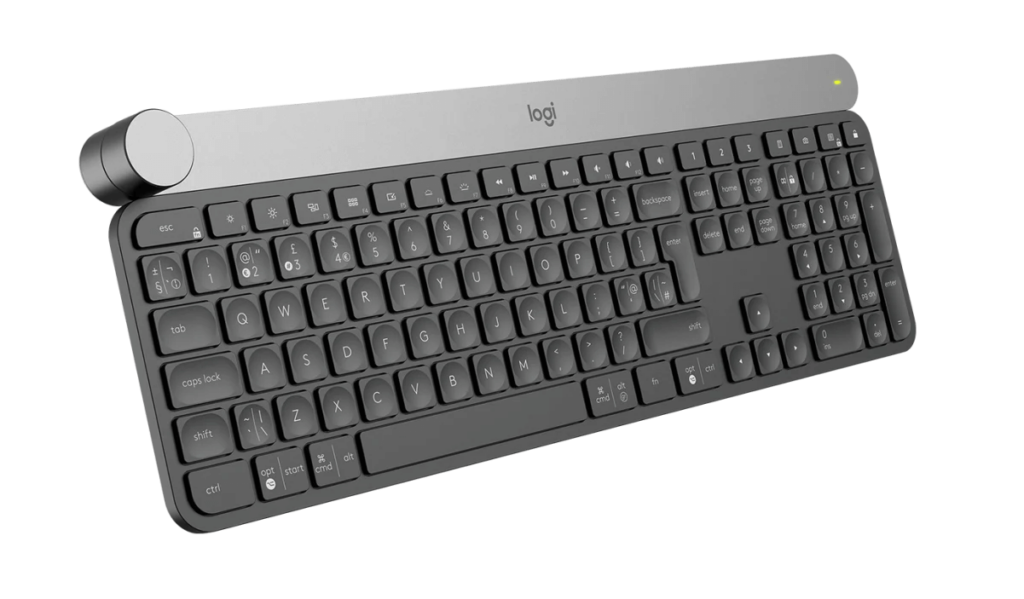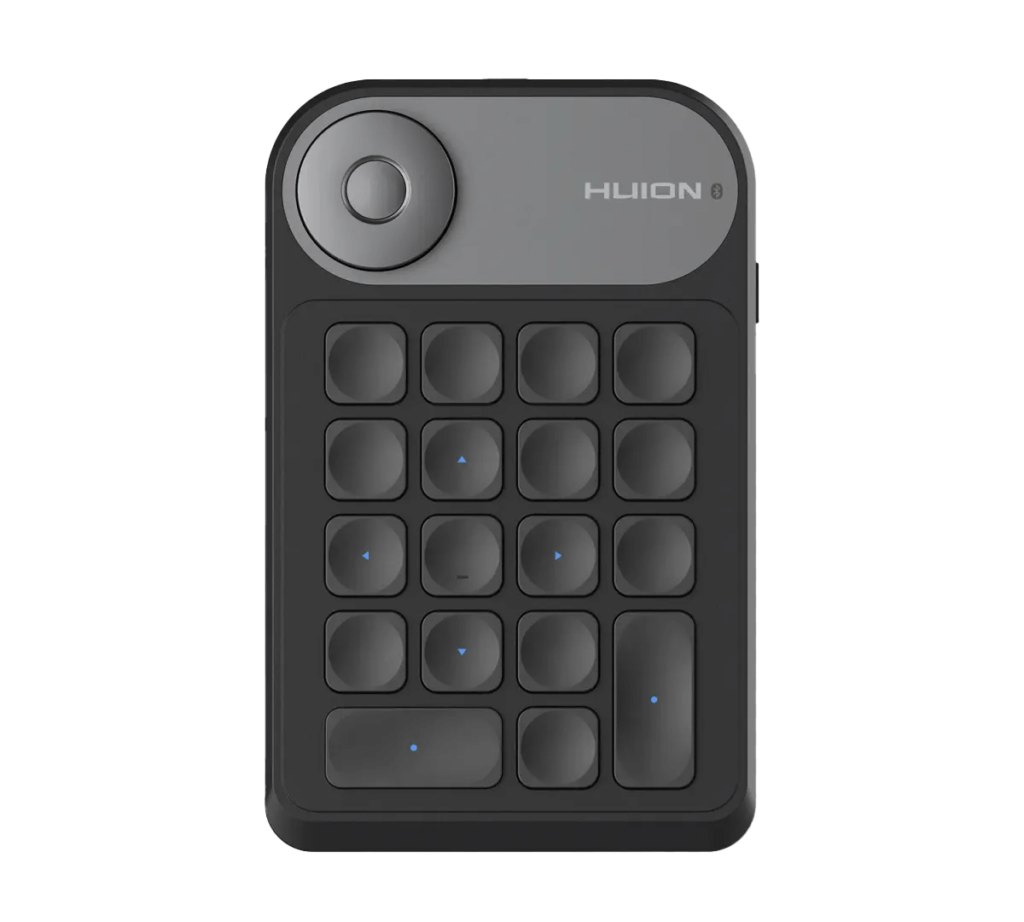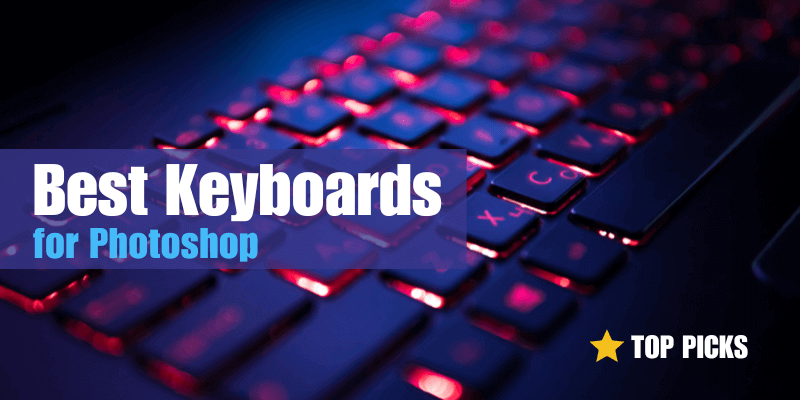As an Amazon Associate, I earn from qualifying purchases.
When creating the ultimate Photoshop workstation, most people start thinking about their CPU and memory rather than their keyboards, but any experienced Photoshop user will tell you that keyboard shortcuts are an essential part of their workflow.
If you want to guarantee that you’re getting every last nanosecond of performance from your Photoshop workstation, you’ll need to pair it with the perfect keyboard.
If this is the first hardware review you’ve checked out here, then I should probably introduce myself: I’m Thomas Boldt, one of the hardware experts here at PhotoshopBuzz, and I’ve been using computers for nearly my entire life. I think the first keyboard I ever used was attached to an ancient computer with a green monochrome display in my kindergarten classroom, but as soon as we managed to get a fancy 386 machine at home, my fascination with computers really took hold.
Since then, I’ve been immersed in the world of computer hardware, and once digital cameras became popular and accessible, that joined neatly with my love of photography. Photoshop was obviously an essential tool, and once I started using it for work and play, I finally realized how important keyboard shortcuts are for a serious workflow.
In this post, I’ve put all these skills together (using my own mechanical keyboard) to help Photoshop editors of all skill levels choose the best hardware available that will unleash their creative productivity.
I’ll explain what you need to know about keyboards in order to choose the best keyboard for your Photoshop workflow and highlight a few of the best options available that cover a range of different needs.
Table of Contents
Key Takeaways
- Mechanical keyboards are best for speed and precision but can be loud and expensive.
- Membrane keyboards are more affordable and much quieter to use.
- The best keyboards for Photoshop have additional specialized keys and alternative input methods that can be customized.
- The best mechanical keyboard for Photoshop is the Keychron Q3 Pro, but those of you who prefer the membrane style will like the Logitech Craft.
Frequently Asked Questions
Since keyboards are an afterthought for most computer users, once people start thinking about them, they have a few questions. Here are a couple of the questions that get asked the most, but if you have a question that I didn’t answer in the article, let me know in the comments below, and I’ll try to help.
Should I get a 60% or 100% keyboard?
The answer to this really depends on your available desk space and your own personal comfort, but unless you have a very small space to work in, a 100% keyboard is usually the best choice.
A full-size keyboard takes up a great deal of space to provide keys that many people never use, such as the number pad, but this gives you a lot of flexibility with how you choose to use your keyboard. A keyboard that’s only 60% of full size removes the number pad and other extra keys, which frees up a lot of space for your mouse and allows you to bring your mouse hand closer to the keyboard.
Is a mechanical keyboard better?
If you care about precision above all else, then yes, a mechanical keyboard is better. Everyone from professional gamers to professional typists prefers mechanical keyboards for their improved accuracy and speed, but those aren’t always the only considerations when selecting a keyboard. Mechanical keyboards are also much louder than their membrane counterparts, and it can take you a bit of time to get used to them.
The Best Keyboards for Photoshop Reviewed
Now that you know the most important things to look for when selecting a keyboard for Photoshop, let’s take a closer look at some of the best keyboards available.
Best Mechanical Keyboard for Photoshop: Keychron Q3 Pro

If you’ve got an unlimited budget, a passion for customization, and you appreciate obsessive attention to detail, then the Keychron Q3 Pro is perfect for you. Before I discovered Keychron, I thought I knew what the phrase ‘attention to detail’ meant, but they’ve set a new standard in that area.
The Q3 Pro is a fully mechanical keyboard with removable keycaps, but it’s not quite as large as a typical full-sized keyboard. Keychron has removed the number pad at the right side of the keyboard and added in a row of 4 customizable keys with a rotary input dial to the left side of the board instead.
These four switches can be customized to create any input combination that you could possibly want. Tired of bending your fingers to hit Ctrl + Alt + Shift + W? Assign the entire shortcut to the custom M1 button instead. Always miss the [ and ] keys when you’re working with brushes? Use the rotary input dial to adjust your brush size smoothly instead.
Since the Q3 Pro supports the QMK system using free VIA software, the customization doesn’t stop with the dial and extra keys. You can customize any of the keys to create any input you want, and you can even store multiple different keymaps within the keyboard itself, so you’ll be ready to use them on any computer.
In terms of connectivity, the Q3 Pro offers both wired and wireless connections using USB-C or Bluetooth, and you can configure it to work with Macs and Windows using the flick of a switch. It can also maintain connections with up to three different devices, so you can switch between your desktop, your laptop, and a mobile device (or any other combination you might need).
The Q3 Pro is available in your choice of 3 colors, and you can select the type of mechanical switches that you want to use from a huge range of different options in the Keychron store. If you decide that you want to swap them out for a different type of mechanical switch later on, you can do it in just a few minutes with no specialized tools. There’s even RGB lighting under each key, which you can also customize based on input responses!
As I mentioned earlier, the only real drawback of the Keychron Q3 Pro is the price, which seems expensive – until you start actually using it, of course, and feel the difference for yourself.
The TLDR Summary: Keychron Q3 Pro is the best keyboard for Photoshop, but also the most expensive.
Best Membrane Keyboard for Photoshop: Logitech Craft

If you learned to type on a membrane keyboard and you’re not interested in the ultimate degree of customization that you get with the Keychron Q3 Pro, then the Logitech Craft keyboard may strike the perfect balance for you.
It uses the scissor-switch membrane design shared by many laptop keyboards, but it also features a handy input dial which Logitech refers to as ‘The Crown.’ The name is a bit pretentious, but the dial idea is nice, and it is well-situated in the upper left corner of the keyboard. This allows you to quickly locate and shift to using the dial without having to adjust either your eyes or your mouse hand at all, allowing you to tweak your brush size or adjust a settings slider without interrupting your flow.
The keys have a slightly dimpled shape to guide your fingers and an appealing backlighting system that only engages when your hands get close to the keyboard. This might be a drawback for some, but I think the computer world has gone a bit too far trying to incorporate LED lighting into every single device, so it’s nice to see a more understated approach.
The design style is a bit more smoothly polished than you’ll find in most mechanical keyboards, although I wish Logitech had made the upper ‘Crown’ segment of the keyboard the same color as the rest of the board.
The software that comes with the Logitech Craft is a little underwhelming when you compare it to what you can do with QMK and VIA, though it does allow you to customize which features it can control. It’s proprietary Logitech software, but it’s minimally invasive and doesn’t get in your way – at least, not at the time of this writing. Some companies (looking at you, HP) have the bad habit of converting their software into increasingly annoying marketing channels, so hopefully, that won’t happen here.
The Logitech Craft can also switch between three different devices with the flick of a switch, so you can use the same keyboard for all your devices without having to clutter up your desk.
As with the Keychron, the Logitech Craft is a premium device that commands a premium price, although it’s significantly more affordable than the Q3 Pro.
The TLDR Summary: Logitech Craft is the best choice if you don’t want to use a mechanical keyboard or you want a more affordable option that still has a dial input.
Best Budget Add-on Keyboard: HUION Keydial Mini

If you want a keyboard that you can customize specifically for Photoshop without altering your normal typing setup, this little add-on keyboard from Huion might be the perfect solution. The keys use the affordable membrane design, but since this keyboard will be dedicated to your Photoshop work instead of also doubling as a standard keyboard, it doesn’t get in the way of usage.
The 18 programmable keys are arranged in a layout similar to the number pad section found on the right side of full-sized keyboards, topped off with a rotating input dial that’s perfect for smooth adjustments of your active tool settings in Photoshop.
Thanks to Huion’s experience making graphics tablets, the keys and the dial are preconfigured to use certain Photoshop keyboard shortcuts, but they can be customized with Huion’s free, lightweight app. Uniquely, the dial actually has 3 different customizable modes so that you can swap between dial-based functions like zoom, brush size, and so on.
The Keydial supports either a USB-C wired connection or a 2.4 Ghz wireless option, but this relies on a USB transmitter, so you won’t be keeping one of your USB ports available by going wireless.
The best part about the Keydial Mini is the price, which is even more affordable than many other basic, no-frills keyboards that didn’t make this list.
The TLDR Summary: HUION Keydial Mini is best for Photoshop users who already have a keyboard they’re happy with but want some extra control for Photoshop.
How to Choose the Perfect Keyboard for Photoshop
Keyboards might seem like a fairly basic device at first glance, but the closer you look, the more complex they appear. If you’ve never thought more about your keyboard than how to type with it, here are a few things you should keep in mind when shopping for the best keyboard for Photoshop.
Key Structure
This is a bit obvious, but the most important thing about a keyboard is how each key functions when pressed. I don’t just mean that it needs to send the correct input signal, but the way the physical button responds to being pressed can have a huge impact on your speed and precision.
Most people who type a lot (including me) use a keyboard with mechanical switches under each keycap, which provide more tactile feedback during each keypress when compared to the membrane switches used for laptops and cheaper keyboards.
Mechanical keys have to be pressed a bit further than membrane keys, but the extra key travel space helps to confirm that you’ve actually pressed the key properly. That extra travel space also creates room for larger keycaps which can be shaped to help guide your fingers for extra precision when touch typing.
This extra precision is useful for typing long documents like keyboard reviews, but it also helps when using keyboard shortcuts accurately in Photoshop – unless you happen to *enjoy* accidentally pressing the shortcut for Close Document instead of Save Document.
That being said, many people still prefer the shorter key travel distance found in membrane designs, and they’re far quieter if you have to work in a shared space. Mechanical keyboards can be quite loud, even when customized with special silent switches, while membrane keyboards tend to be very quiet, even in a quiet room.
One last unexpected advantage of mechanical keys: they can be easily removed when it’s time to clean your entire keyboard, which can’t be done with most membrane models. If you spend a lot of time sitting at your keyboard, this can be a huge benefit.
Specialized Keys
Aside from the ability to type up emails, documents, and any other routine digital task you might need to complete, the best keyboards for Photoshop also have additional specialized keys that can be used directly with Photoshop. These can take several forms, but the most common method is to use a modified keyboard layout with extra space added on one end of the keyboard to hold the extra keys.
Some keyboards provide rotary input dials that provide a more tactile way to select features like brush size, hardness, opacity, or any other slider setting you might need, and some even provide combinations of these input dials and additional keys.
QMK Support
Many users won’t care about this feature, but if you value total customizability over everything else, QMK support is essential in a good Photoshop keyboard. If you’re unfamiliar with the acronym, don’t feel bad, as it’s mostly unknown outside of certain productivity-focused corners of the internet, but Photoshop productivity is a big deal when you’re working on a deadline.
QMK stands for Quantum Mechanical Keyboard, and it’s an open-source hardware project that allows you to remap any key on your QMK-supported keyboard to produce a different input signal using a free software package named VIA.
You can even bind a single key or combo to input multiple keystrokes in succession, known as a macro, which allows you to reach new heights of productivity as long as you have the time and patience to configure all of this first (and the memory to keep track of each rebinding and macro that you create).
Connectivity
Last but not least, consider the method you want to use to connect your new keyboard to your computer: wired or wireless. There are pros and cons to each method, so the “best” choice will depend on your situation.
Wired keyboards take up one of your USB ports and can create wire tangles once you add in a mouse, graphics tablet, and a card reader hub, but the fact they are wired also means they get power from the USB port, are free from signal interference, and never accidentally disconnect from the computer in the middle of usage.
Bluetooth is a popular wireless connection protocol that helps to create clutter-free workspaces, and most modern Windows desktops and all Mac desktops support Bluetooth, but that also means these keyboards work on batteries and require charging every now and then. Mostly, they’re problem-free, but Bluetooth connections can sometimes be troublesome when there are a lot of active devices nearby.
Some Bluetooth keyboards also have the ability to maintain connections to multiple devices at once, so you can connect to two different computers or your desktop and a mobile device. As far as I know, there aren’t any wired keyboards that can pull off the same trick without a KVM switch.
The best keyboards will support both wired and wireless connections so that you can choose the configuration that works best for your workspace, and they will support connections to multiple devices with the flick of a switch (or the tap of a key).
A Final Word
Hopefully, you’ve found a new appreciation for the complexity of the humble keyboard, and with any luck, you’ve also found the best keyboard for your Photoshop workflow and personal preferences. Many new users are a bit surprised that there are so many keyboard options out there, but once you start spending your whole workday with a really good one, you’ll quickly realize what you were missing.
Time to start practicing your keyboard shortcuts!
About Thomas Boldt